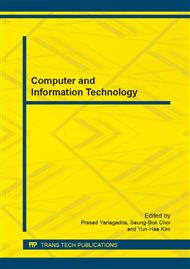p.548
p.553
p.557
p.562
p.568
p.572
p.577
p.581
p.585
Automatic Schizophrenia Prediction Using Palm-Print Line Features
Abstract:
Palm-print has a wide range of applications in personal identification, disease diagnosis, and athletes selection. This paper focuses on automatic schizophrenia prediction based on the anomalies in the handprints of patients with schizophrenia. The application is an image processing system, which works on the basis of the relationship between palm print pattern and schizophrenia. The images of human palm form input to the system. Then, system applies digital image processing and analysis techniques on input images to identify certain features in the image. Based on the certain features captured, it is possible to identify a high-risk group for schizophrenia. Present scientific techniques have no way of stopping critical illness from occurring and the increase in death rate will continue. Early diagnosis and early treatment are essential on in dealing with those illnesses. If more relationship between palm print pattern and disease can be ascertained, the proposed system can be very useful to human being to get indication of disease in advance.
Info:
Periodical:
Pages:
568-571
Citation:
Online since:
February 2014
Authors:
Keywords:
Price:
Сopyright:
© 2014 Trans Tech Publications Ltd. All Rights Reserved
Share:
Citation:


